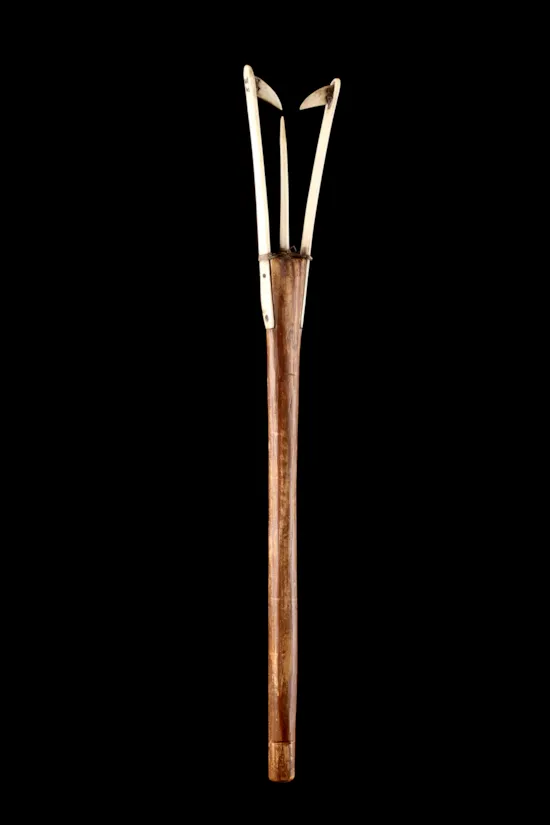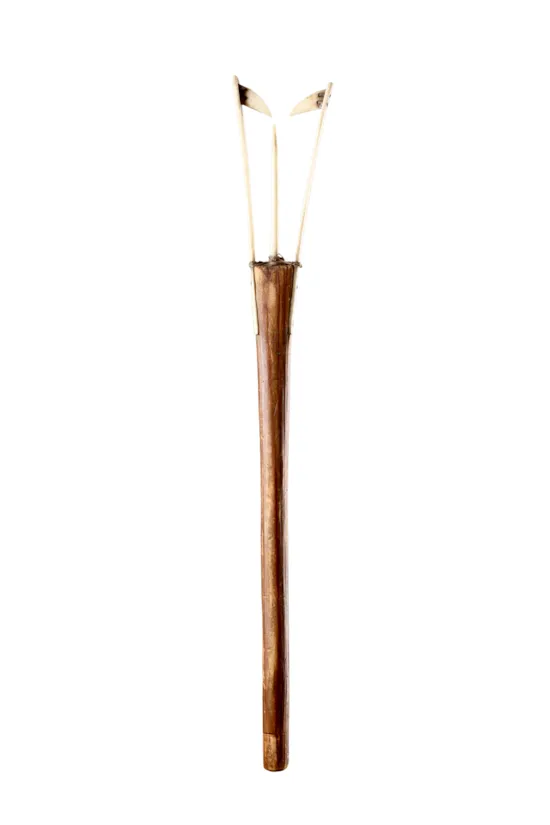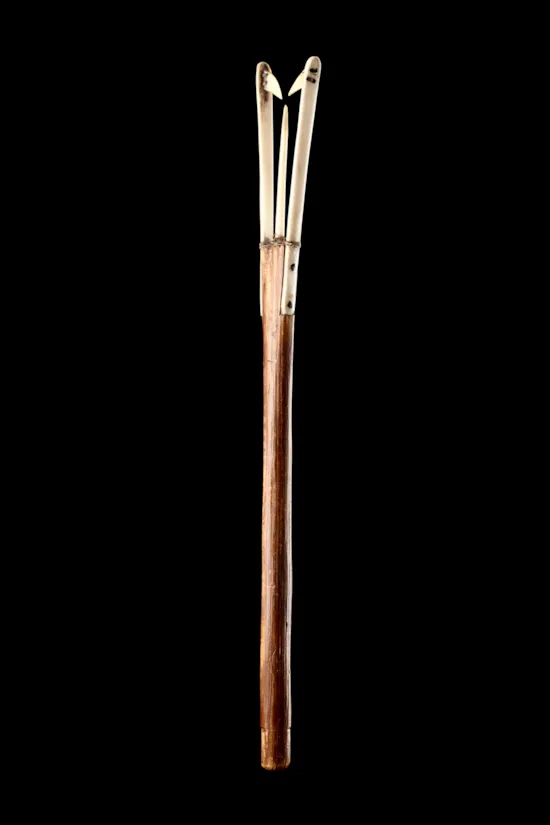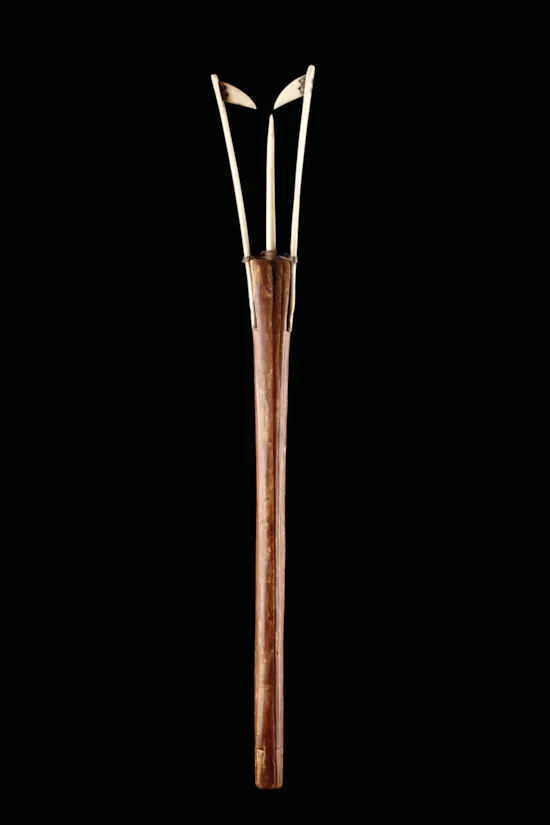Bering Sea Yupik Eskimo Inuit Carved Cedar-Wood and Walrus Ivory Short Fishing Spear
A Bering Sea Yupik Eskimo Inuit Carved Cedar-Wood and Walrus Ivory Short Fishing Spear for use at an Ice Hole when catching Tomcod
19th Century
Size: 38cm long - 15 ins long
19th Century
Size: 38cm long - 15 ins long
Bering Sea Yupik Eskimo Inuit Carved Cedar-Wood and Walrus Ivory Short Fishing Spear for use at an Ice Hole when catching Tomcod
Ex European collection
Acquired Portobello Road London 1980’s
Acquired Portobello Road London 1980’s
This short spear is used to catch fish through holes made in the ice. It has a central point of walrus ivory flanked by springy side prongs with wedge like tabs that close round the body of the fish once it has been impaled. Tomcod fishing is a Winter activity conducted in shallow water through freshly made holes in the ice. These are made by chopping with ivory or antler tipped ice picks, then clearing out the floating ice with netted scoops. The tomcod are abundant from November onwards, but the North winds blow very cold rendering it uncomfortable to remain for hours in one position on the ice. To remedy this the fishermen arrange small shelters of grass mats held on a framework of sticks to the windward side of the ice hole. In the late 19th century an Inuit fisherman could catch up to 200 pounds of tomcod in a day, but by the 20th century, 10 to 40 pounds was the average result of a good day’s fishing.
Bering Sea Yupik Eskimo Inuit Carved Cedar-Wood and Walrus Ivory Short Fishing Spear
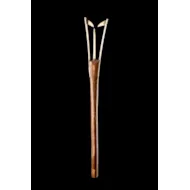
SOLD
